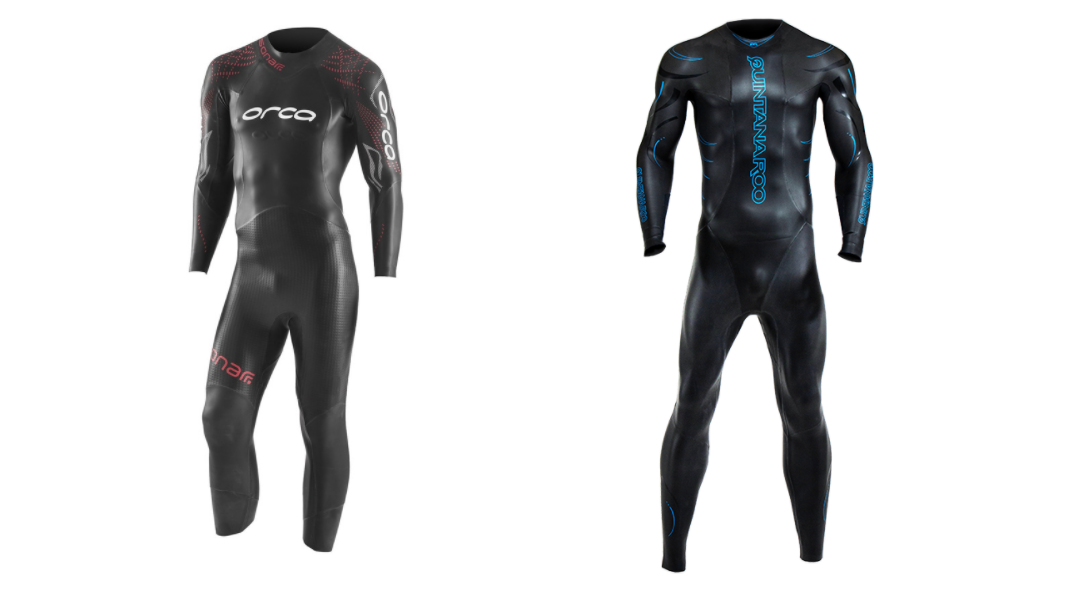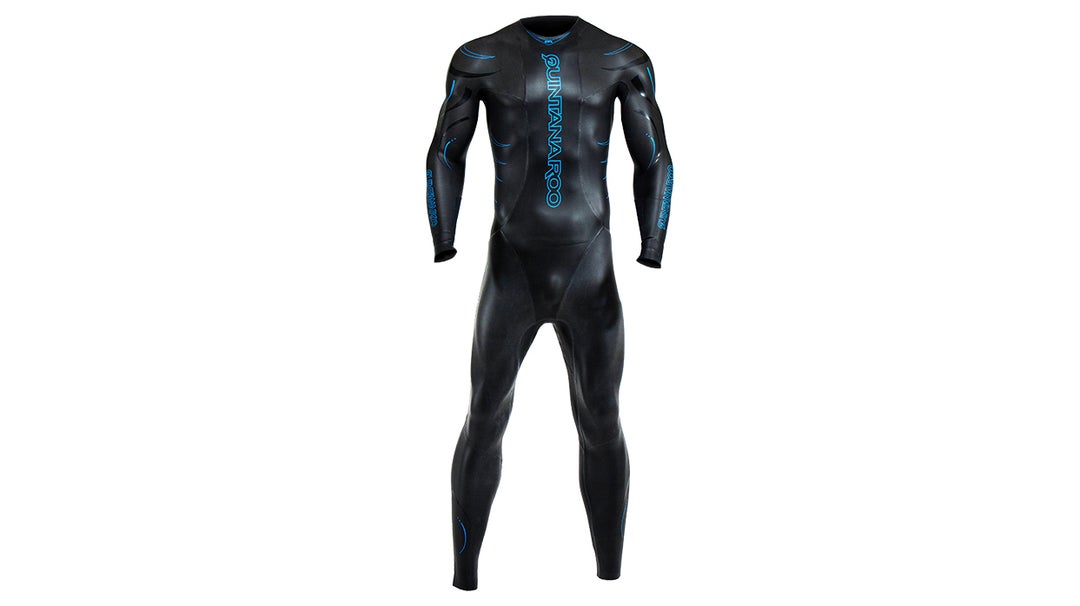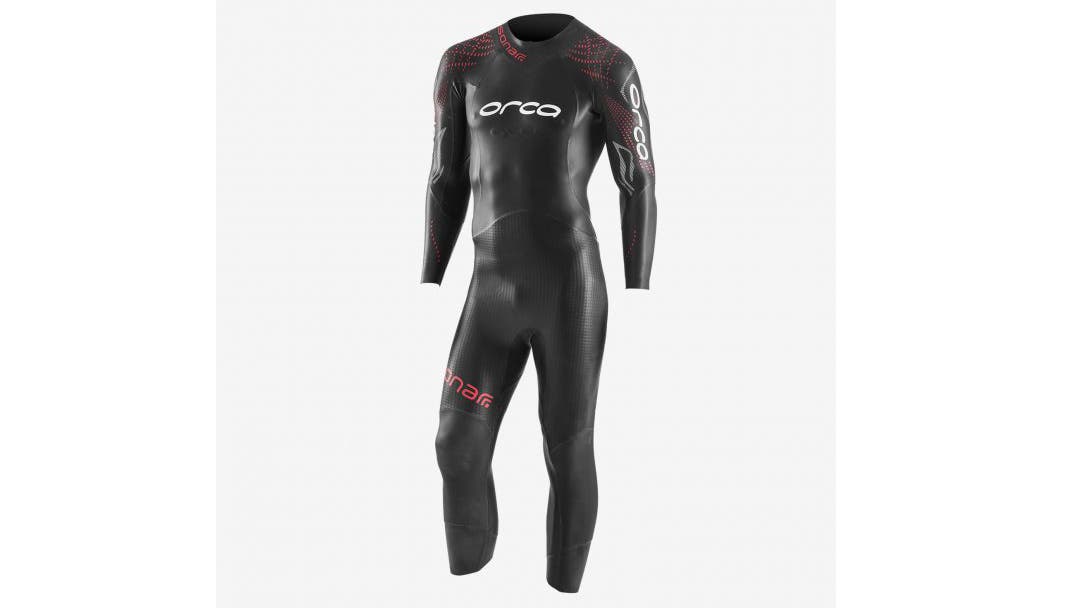Face-Off: Two 2020 Wetsuits for About $500

Why These Two Wetsuits?
While $500 used to be pretty much the top end for neoprene in tri, today almost every brand is making a wetsuit way north of that. Yesterday’s Most Expensive Wetsuit has now morphed into something that people might dare call “midrange.” Though it’s hard to say why the middle has stretched skyward when it comes to tri rubber, for sure the amount of features, brand choices, and suit specificity is growing and becoming more bifurcated. Today, we have different wetsuits for every triathlete, but not necessarily one wetsuit that works perfectly for everybody. The peak example: Just last week we reviewed a new wetsuit from Roka that’s made for pure, unadulterated (and unapologetic) buoyancy, that’s meant to target beginners, but which also happens to cost $500.
Just a few years ago, a $500 wetsuit would be a good wetsuit for almost all triathletes, but today that price point is where you begin to find wetsuits that are made with a specific triathlete body shape/swim style/swim-leg goal in mind. The wetsuits in this month’s face-off are two more good examples of suits that are really really really good for a specific type of triathlete, but maybe just pretty good for everyone else. Read on for more.
Related:
Reviewed: Roka Maverick MX Wetsuit
Unboxed: Quintana Roo Hydrospeed Speedsuit

Quintana Roo HYDROfive
- Price: $480
- Quintanarootri.com
Two years ago, we saw triathlon wetsuit pioneer Quintana Roo’s reentry into the neoprene market after a long hiatus. Though they’ve become known for their tri-only brand of bikes in the last few years, Quintana Roo was once known as a top tri wetsuit company. In fact, the founder invented the darn things. So it goes without saying that QR’s return to wetsuits was much anticipated, and they came through with a very nice—though maybe slightly overpriced—suit called the HYDROsix in late 2018. Less than a year later, QR released the HYDROfive, a more affordable version of the HYDROsix with similar features, but a few lower-end panels of neoprene to save some cash. They also lowered the price of the HYDROsix considerably to just under $500.
The resulting HYDROfive is a wetsuit with some excellent low-key details that may not have the flash and features of other brands’ mid/high-end models, but does a lot under the hood. First, the HYDROfive uses #39 and #40 Yamamoto rubber—two of their higher-end offerings—to make up the entire suit. It also has a SCS nanocoating to reduce drag, another high-end offering common on many suits. Those few features aside, the big pros for the HYDROfive are far more subtle.
First, we found this a very warm wetsuit, something a lot of swimmers will likely appreciate. On that same note, this was a very floaty wetsuit, though nothing like the Roka MX we spoke about above. Finally, we loved the way that the HYDROfive forced rotation while swimming—this is where suit/swimmer specificity truly begins to creep in. This suit definitely works best for a shorter, choppier stroke, a style that many open-water swimmers use, particularly when swimming in rough conditions. Conversely, when really trying to stretch out your stroke, more lengthy, flowing swimmers may struggle and find a little tugging through the shoulders. With a more neutral stroke, there was no tugging, but instead the motion helped push rotation into its proper place—the HYDROfive had a fantastic connection between stroke and hips. Similarly, this suit felt best while swimming quickly with a high stroke rate.
All of this adds up to a suit that works well for maybe a newer swimmer or someone with a lighter background in the water. For those who need their stroke “formed” into the proper box, for those who want more floatation and warmth, the HYDROfive helps a ton. For those swimmers who like to truly feel the water and want unlimited flexibility in all directions, this is probably not the best choice; for those who love to really elongate their stroke and swim with a super low stroke rate, maybe keep reading.

Orca Sonar
- Price: $500
- Orca.com
Newly updated for 2020, Orca’s mid/high-end Sonar is the opposite of QR’s HYDROfive in almost every way. Whereas QR’s suit had only a few features of note, the Sonar is chock full of stuff like a “core lateral stabiliser,” that helps with lateral rigidity, an “Infinity Skin” liner that helps maintain body heat and decrease bacteria growth, and little bubbles in their neoprene Orca calls “Aerodome 2” that helps with floatation without adding bulk. When all is said and done, Orca’s focus with the Sonar is definitely on modern materials to help with keeping weight down and flexibility up.
It’s no surprise that the result is a suit that feels much more like a second skin than the HYDROfive—for better and for worse. With the QR suit, you absolutely know you’re wearing a wetsuit: It keeps you very warm, it helps improve your body position, and it helps with your stroke. With the Orca, the thin neoprene keeps you plenty warm, but not noticeably. Same with the amount of floatation—the Sonar will absolutely float you more than nothing at all, but not really in the same category as the HYDROfive and certainly nothing like Roka’s MX. The Sonar also has that super high-end feeling of flexibility throughout the shoulders, legs, back, and pretty much everywhere that many swimmers—particularly experienced swimmers—truly value above all else.
In that same vein, the Sonar is a great suit for those who really like to lengthen out their stroke, though there’s no downside to swimming with a shorter stroke as well. For swimmers who like to stretch it out or glide a bit longer, you’ll find the Sonar more comfortable at a wider range of speeds—in terms of flexibility through the shoulders and torso. You just won’t find as much of that stroke/position/rotation “guidance” that we experienced in the HYDROfive. One could also say that a “natural swimmer” might enjoy the better water feel of the Sonar, while giving up a slight bit of warmth. This wetsuit was also the easiest to remove out of almost all wetsuits we’ve tested this year.
The Better Wetsuit for $500: It Depends
This may seem like a huge cop out, but with two extremely different wetsuits for about $500, it would be unfair for one to be deemed “better” than the other. Need guidance, floatation, warmth, and want to swim with a shorter stroke? Go for the QR. Like to stretch out and feel the water? Go Orca for sure. For me—someone who is not a natural swimmer, someone who benefits far more from structure and form/position guidance—the QR is a clear winner; though I can safely say I felt more excited to put on the Sonar. The HYDROfive is a fantastic tool for swimming faster on race day, but it lacks the bells, whistles, and fun that flexibility and neat tech sometimes provides. The QR may make me swim better, but the Orca might inspire me to get out into the open water more often. I do believe that swimmers with a serious club, high school, or collegiate swimming background might find the Orca a better match overall, allowing them to dial in their already-perfect form, but I will probably always need all of the help I can get.